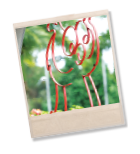EN26EN28EN30GC 8
Protection and respect for the environment are extensions of Eternit’s own operations and are therefore promoted on a daily basis by each of the Company’s employees. Policies, practices and procedures in socioenvironmental responsibility are all part of the Integrated System Program (PSI), implemented at Eternit.
The operations of Eternit, Precon and SAMA all carry ISO 14001 (environmental management) and OHSAS 18001 (occupational health and safety management) certification. SAMA, moreover, was the first chrysotile asbestos manufacturing company in the world to comply with these standards. The environmental management system adopted by all these units identifies and controls environmental aspects in compliance with federal, state and municipal legislation, and is based on FMEA methodology.
Tégula, in the process of adapting to ISO 14001 certification, has been part of the Brazil Green Building Council Brasil since 2011, a body that disseminates socioenvironmental practices and Leadership in Energy Environmental Design (LEED) certification in the construction sector. The company also has recently incorporated wood products certified by the Brazil Forestry Stewardship Council in its product portfolio.
Eternit’s environmental investment totalled R$5.2 million in 2012 (the information detailed in the table below). During the year, the Company was not subject to any significant fines or sanctions for non-compliance with environmental laws or regulations.
EN28SAMA has a department dedicated to the management of quality, environmental aspects and environmental control, which has the role of maintaining certifications and monitoring environmental impacts both internally and within the supply chain. In 2012, Tégula implemented rainwater catchment facilities. For 2013, it plans to install tanks for the collection of water and oil in diesel fueling area, to replace old tractors, and install translucent tiles in the roofs of its plants, while also improving the dust removal system in the cement works. Subsequently, these actions will be monitored to assess the mitigation results environmental.
EN26| Total investment and expenditure on environmental protection (R$‘000) | 2012 | 2011 |
|---|---|---|
| Costs associated with the disposal of residue, the treatment of emissions and expenses of environmental mitigation measures | ||
| Treatment and disposal of residues | 1,114.22 | 966.59 |
| Treatment of emissions | 462.13 | 1,207.16 |
| Emissions certifications | - | 73.89 |
| Depreciation, material and maintenance | 995.91 | 703.44 |
| Safety in environmental responsibility | - | - |
| Total cleaning costs | 439.07 | 1,009.80 |
| Subtotal | 3,011.33 | 3,960.87 |
| Costs of environmental prevention measures and environmental management | ||
| Education and training | 97.40 | 139.98 |
| External environmental management services | 492.29 | 629.39 |
| External certification | 42.31 | 36.87 |
| General environmental management activities | 1.90 | 1.90 |
| Research and development | - | - |
| Expenses of installing clean technologies | - | - |
| Other environmental management costs | 1,547.16 | 1,234.99 |
| Subtotal | 2,181.05 | 2,043.13 |
| GENERAL TOTAL | 5,192.38 | 6,004.01 |
Materials
GC 8 GC 9Eternit’s consumption of materials is optimised using various initiatives in alignment with the concept of the 3Rs (reduction, reuse and recycling). At the fiber-cement production units, all the material resulting from breakages or products that do not conform to specifications, is crushed and reused. Even office paper and packaging are used in the manufacturing of tiles, instead of disposing of them. Initiatives such as these are part of the Company’s zero reject policy.
Any residues, including oil sludge, felt, hoses, tyres and metal scrap are all correctly disposed of by specialist outsourced companies. Other recyclable material has been collected since 2006 under the RECICLANIT program and sent to cooperatives and recycling companies. At SAMA, the sterile tailings are deposited in tailing piles for subsequent revitalization and the replanting of vegetation. Only a small proportion of this material is reused in the Sambaíba project, which produces arts and crafts items from the sterile rock.
EN1| Materials used by weight and volume (in ‘000 tons, except where otherwise indicated) | 2012 | 2011 | Direct | Non-renewable | Recycled | |
|---|---|---|---|---|---|---|
| Fiber-cement roofing and construction systems | Chrysotile asbestos¹ | 54.98 | 66.89 | X | X | |
| Lime¹ | 131.70 | 138.40 | X | X | ||
| Recycled pulp (newspapers)¹ | 8.95 | 11.71 | X | X | ||
| Bleached pulp² | 0.063 | 0.002 | X | X | ||
| Unbleached pulp² | 2.22 | 0.92 | X | X | ||
| PVA² | 1.21 | 0.20 | X | X | ||
| Cement¹ | 397.91 | 433.07 | X | X | ||
| Steel coils | 0.27 | 0.27 | X | X | ||
| Filler | 14.63 | 15.83 | X | X | ||
| Lime residue (Lama Call)¹ | 2.57 | 5.27 | X | X | ||
| Polyethylene resident | 0.58 | 1.21 | X | X | ||
| Aluminium paint¹ (litres) | 6.05 | 10.22 | X | X | ||
| Ceramic paint³ (litres) | - | 5.20 | X | X | ||
| Wood offcuts | 9.35 | 9.10 | X | X | ||
| Pine sheet | 2.10 | 4.23 | X | X | ||
| Wood (pallets) (units) | 27.72 | 20.02 | X | X | ||
| Other net materials (litres) | 1,259.97 | 1,064.72 | X | |||
| Others | 4.82 | 1.99 | X | X | ||
| Concrete roofing and accessories | Cement | 50.41 | 54.52 | X | X | |
| Sand | 224.10 | 242.80 | X | X | ||
| Filler | 0.44 | 1.34 | X | X | ||
| Pigment | 0.36 | 0.39 | X | X | ||
| Varnish | 0.22 | 0.25 | X | X | ||
| Soya Lethicin | 0.04 | 0.05 | X | |||
| Pine battens | 0.10 | 0.12 | X | |||
| Pine framework | 0.20 | 0.24 | X | |||
| Srretch film | 0.06 | 0.06 | X | |||
| Other net materials (litres) | 648.80 | 656.69 | X | |||
| Chrysotile mining | Ore | 4,716.44 | 4,914.50 | X | X | |
| Sterile rock | 14,561.51 | 11,889.68 | X | X | ||
| Plastic | 0.28 | 0.28 | X | X | ||
| Wood (pallets) | 3.63 | 3.63 | X | |||
| Sundry Items | 15.15 | 15.09 | X | |||
| Concertina bags for packaging | 5.53 | 5.83 | X | X | ||
1. Reduction in 2012 due to lower production volume.
2. Increase in quantity of products without without asbestos.
3. No longer used because of the closing of the Eterville plant.
| Total inputs used, direct and non-renewable (amounts in '000) | 2012 | 2011 |
|---|---|---|
| Total inputs used by the Eternit Group (tons) | 20,214.62 | 17,817.84 |
| Total inputs used by the Eternit Group (litres) | 1,914.82 | 1,736.84 |
| Total inputs used by the Eternit Group (units) | 27.72 | 20.02 |
| Total non-renewable materials (tons) | 20,161.84 | 17,766.12 |
| Total non-renewable materials (litres) | 1,914.82 | 1,736.84 |
| Total direct materials (tons) | 20,171.37 | 17,780.84 |
| Total direct materials (litres) | 6.05 | 15.42 |
| Total direct materials (umits) | 27.72 | 20.02 |
The resue of pallets and the consumption of recycled pulp resulted in an recycling index of 1.48% of inputs from recycling in the production process. In 2012, at SAMA, there occurred the spillage of 80 liters of lubricating oil at the industrial plant. Steps were immediately taken, with the use of na emergency kit for the cleaning and disposal of residue spilled, thus there was no impact on the soil. There were no spillages at any of the units of Eternit or Tégula.
EN2EN23Packaging
EN27GC 8Eternit and Precon Goiás reuse 100% of their chrysotile fiber packaging in the fiber-cement production process. At SAMA, the end-portions of the production lots that do not make up a pallet are used to complete new lots. In 2012, packaging reuse resulted in the consumption of approximately 25,360 raffia bags. At Tégula, the plant in Içara (SC) controls the recovery of battens in the loading process, having recovered 1923 pieces in 2012. For the year, the plant sold 5819 kg of scrap iron and cardboard, recovering the sum of R$1523.30. In Atibaia (SP), the battens for the Big tiles and the wooden structures for the packaging of Tradição and Double S tiles were removed, which reduced the consumption of battens and wooden structures by 45.5 cubic meters.
EN22EN24| Total residue weight by method and type of disposal (t) | ||
|---|---|---|
| Reuse | Dangerous | 161.52 |
| Recycling | Non-dangerous | 664.09 |
| Dangerous | 10.00 | |
| Recovery | Non-dangerous | 83.70 |
| Incineration | Dangerous | 39.35 |
| Sanitary landfill | Non-dangerous | 382.21 |
| Dangerous | 10.75 | |
| Landfill | Dangerous | 5.01 |
| Co-processing | Dangerous | 125.00 |
| Others | Dangerous | 86.65 |
| Non-dangerous | 4,474.61 | |
| Total | 6,042.90 | |
CHRYSOTILE FIBER PACKAGING IS REUSED IN THE PRODUCTION PROCESS
Energy
EN5EN6EN7GC 8GC 9At Colombo (PR), the unit has a wood-fired boiler for the generation of energy, partially fuelled by the residue from the Wall Panel production process, replacing LPG, which represents a saving of R$150,000 per year. In addition to this, the unit has initiatives for replacing the engines in the plants with more efficient models, and in 2013, a pilot project will be carried out for the installation of LED lamps, reducing electricity consumption.
At SAMA, energy consumption was reduced by 4.82%, due to awareness initiatives, the implementation of its energy efficiency project in its warehouses, and the Seis Sigma project applied to the industrial area. In the mining company’s caves, the supply of the water tanks, by tanker trucks instead of pump action at peak hours, resulted in a reduction in power consumption of 2.55% for the year.
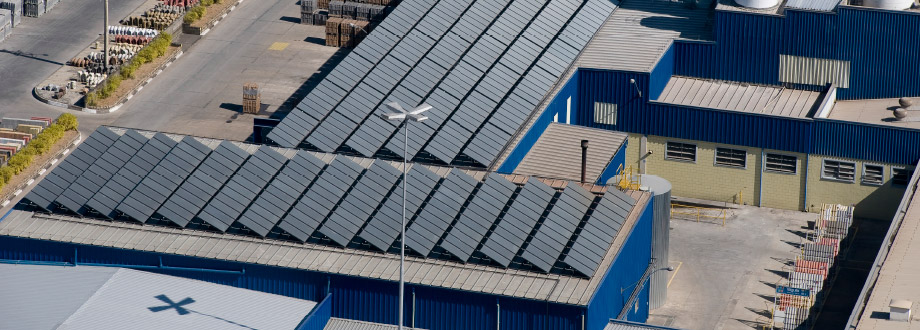
Meanwhile, at Tégula, the unit in Frederico Westphalen (RS) has installed translucent tiles to make use of natural light, and has replaced its external sodium lights, with more economic bulbs, which are activated by presence senses. At Tégula Içara (SC), wind powered exhaust ventilators were installed to provide a more comfortable temperature of four employees, improving the work environment, while diesel oil was replaced by gas as a fuel. Another aspect was the replacement of diesel with gas (repetition). Tégula Atibaia (SP) also uses a bank of panels to capture solar power, with the objective of reducing the burning of fuel for the water heaters. The solar panels reduce power consumption by around per year 1,174,140 kWh/year.
EN5EN6EN18
EN3
|
EN4
|
Emissions EN29
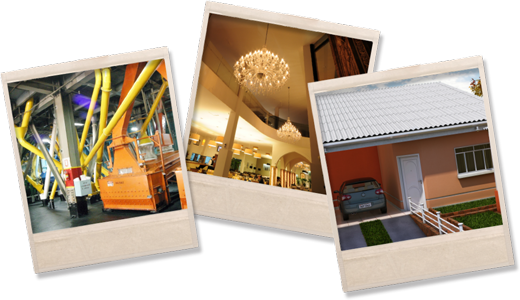
The Company monitors emissions in its plants and at the mining company using processes that are part of the Environmental Management System, facilitating the integration of the data and comparisons with previous years. The Company has the target of completing and publicising its inventory of emissions in 2014.
The SAMA, the fuel used in 5 furnaces for the drying of the ore is liquid petroleum gas (LPG), the average consumption of 302,000.00 kg per month. LPG has the advantage of easy handling, transport and storage, rapid combustion and high calorific power. It is also a clean source of energy, because it does not produce toxic residues, and generates a low emission of carbon monoxide, nitrous oxides and particle materials, reducing greenhouse gas emissions. The result of the monitoring of the furnace chimney outlets indicates emission results below the limit established by the legislation, although no parameters have yet been published. Tégula has the target of beginning monitoring of nitrous oxide emissions by 2014.
EN29EN20At Tégula, the replacement of diesel oil with LPG in the boiler burner will result in an estimated annual saving of R$18,000. In São José do Rio Preto (SP), diesel was replaced with LPG in the heating system for the curing chambers, but the savings from this have yet to be calculated.
In 2012, only SAMA carried out an inventory of direct and indirect emissions. To access the details of this inventory, readers should consult SAMA’s sustainability report for 2012 on the following website: www.sama.com.br. Eternit will resume its inventories from 2013, while Tégula as the target of implementing, from 2013, a system for the monitoring of greenhouse gas emissions of its diesel powered vehicle fleet and the diesel vehicles that operate within the plant at Atibaia (SP), using Ringelmann ring sample testing. Drivers whose tracks do not meet the standard will be formally communicated of this fact, and if the problem persists, will not be allowed to enter the units.
EN16EN17| Consumption of HCFC – 141B (kg) – SAMA | |
| 2012 | 150 |
| 2011 | 90 |
With respect to other emissions, SAMA as a system for the management of the gas HCFC-141B, used in the air conditioning units of the mining equipment.
The increase in the consumption of HCFC-141B is due to the expansion in the fleet of mining equipment, which has been increased from 24 to 59. This gas is used in the air conditioning
of the mining equipment, including the leveling machine, excavators, trucks, wheeled and tracked tractors, dump trucks, water tankers, and drilling machines.
The units of Eternit, Precon Goiás and Tégula do not use substances that have an impact on the ozone layer, or that are covered by Annexes A, B, C and E of the Montreal Protocol. The refrigeration equipment at Tégula, for example, uses, R22 gas, which does not cause this type of damage.
EN19
The units of Eternit, Precon and SAMA also carry out the monitoring and control of fibers in suspension.
EN20| Emission control | |
|---|---|
| SAMA | |
| Controls | Filter hoses - filter hoses and cartridges - all the chimneys, dust is tractors and scrubbing machines carry a system of filter hoses and cartridges, which has the objective of filtering degeneration of particles. In addition to monitoring, one employee is is allocated per shift who is responsible for the daily inspection of the hoses and filters. |
| Fibers in suspension | Sama - on a monthly, quarterly or half yearly basis, monitoring is carried out at various points of the company and its surroundings, with the objective of measuring the quantity of fibers/cm³ in the air. For inorganic fibers (occupational sample), the limit established by the National Agreement for the Safe Use of Chrysotile Asbestos is 0.10 fibers/cm³ of air, and in 2012 100% of the workstations (88 measurement points) showed an average below the limit, remembering that the limit for NR-15, Annex 12, is 2.0 fibers/cm3. |
| Eternit and Precon | |
| Controls | Report for the monitoring of atmospheric emissions, which provides data for assessment/monitoring of atmospheric pollutants. |
| Fibers in suspension | Half yearly assessment of the concentration of asbestos dust in suspension in the air in the work places, for which the Company undertakes to maintain a maximum concentration of 0.10 fibers/cm³ of asbestos in all the work places. |
| Results | Atmospheric emissions at the fiber-cement plant: 4.53 mg/Nm³ of particle material. Atmospheric emissions at the synthetic marble plant: 18.66 mg/Nm³ of particle material. Fibers in suspension: < 0.1 f/cm³. |
| Considerations | The values obtained in the collection of atmospheric emissions showed themselves to be within the maximum limits permitted by CONAMA Resolution No. 382/2006 the concentration of asbestos fibers in suspension were found to be below the limit of 2.0 fibers/cm³ established in Annex 12 of Regulatory Standard NR 15. |

Water
EN9EN10GC 8GC 9At the plants of Eternit and Precon, the water from the production process is stored in decantation tanks, and subsequently used in a closed circuit for its reuse. With this, losses only occur as a result of evaporation, and there is no water run-off from these units. While the water used in the administrative installations passes through the unit’s Sewage Treatment Station for subsequent reuse in the irrigation of green areas. In some units, there are also initiatives for rainwater catchment.
EN8| Total water drawn off by source | 2012 | 2011 |
|---|---|---|
| Surface water (rivers) | 664,203 | 649,248 |
| Underground water | 819,611 | 861,777 |
| Rainwater (collected/stored) | 312,410 | 442,000 |
| Municipal supply | 129,926 | 228,362 |
| Supply (others) | 0 | - |
| Total m3 | 1,926,148 | 2,181,387 |
In 2012, SAMA recirculated and reused 14,086 m³ of water, which represents 1.12% of the total water volume consumed. This water comes from, among other internal sources, the stabilisation lake of the Sewage Treatment Station. In addition to this, all the units of Tégula reused the water for the washing of the varnishing machine, which corresponds to the reuse of 1.17% of the water reused in the plants.
Effluents totalled 9,216.48 m³ at Eternit and 116,921.00 m³ at SAMA. At Tégula, there was no significant effluent discharge, consisting only of the effluent from the administrative buildings through local sewage networks.
EN21All the effluent generated by SAMA’s production process is sent to the Effluent Treatment Station, where biological treatment is carried out. Periodic chemical analyses are carried out for the assessment of effluent quality (some on a daily basis, others monthly and/or half-yearly), in compliance with the standards established by Conama No.430/2011. The results of these analyses and assessments in 2012 attest to the compliance with the legislation.
EN25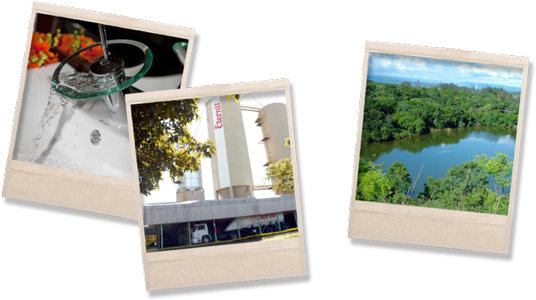 |
IN 2012, ALL THE UNITS OF ETERNIT AND PRECON INSTALLED BIO-DIESEL POWERED GENERATORS FOR THE PRODUCTION OF ELECTRICITY AT PEAK CONSUMPTION HOURS. |
Biodiversity GC 8
Eternit monitors and encourages the preservation of biodiversity in environmental and areas within or close to its operational units. Together these nature protection habitats cover an area equivalent to over 4000 football fields, with various species of Brazilian fauna and flora.
EN11EN13| Areas protected | ||
| Location | Colombo plant (PR) | Part of the Environmental Preservation Area of Iraí, in the eastern part of the Curitiba metropolitan region, which extends for 115 km² over five munipalities. Encroaching on the Western part of the of the Serra do Mar in Parana, it has flat regions which are a transition area between mixed sub-tropical moist forest, also known as the Araucária Forest, and dense subtropical moist forest, covering one of the last remaining water meadows. |
| Status | Environmental reserve | |
| Time of area domination | Since 1975 | |
| Size of built area (m2) | 58,377 | |
| Size of preservation area (m2) | 327,000 | |
| Equivalent area | 7.1 football fields | |
| Location | Simões Filho Plant (BA) | Part of the hydrographic sub basin of the River Itamboatá, which belongs to the Joanes/Ipitanga environmental preservation area. Located in the metropolitan region of Salvador, it extends for 644.63 km² and covers the municipalities of Camaçari, Simões Filho, Lauro de Freitas, São Francisco do Conde, Candeias, São Sebastião do Passe, Salvador and Dias D’Ávila. It has a hot humid climate and beautiful beaches beside the dunes with vegetation native to sandbanks, with species of fauna and flora. Mangrove swamps, rich in biodiversity, are to be found in the estuary of the Joanes River. In the environmental preservation area are also remaining areas of Atlantic Forest and substantial quantities of avifauna. |
| Status | Environmental reserve | |
| Time of area domination | Since 1967 | |
| Size of built area (m2) | 53,000 | |
| Size of preservation area (m2) | 801,000 | |
| Equivalent area | 98.2 football fields | |
| Location | SAMA – Minaçu (GO) | The forestry reserve located in the Serra de Cana Brava typically consists of vegetation typical of the Cerrado Bioma and is part of the hydrographic basin of Alto Tocantins. The predominating climate is tropical humid, with two seasons, rainy seasons, followed by very dry winters. |
| Status | Environmental reserve | |
| Time of area domination | Since 1999 | |
| Size of built area (%) | 20 | |
| Size of preservation area (%) | 80 | |
| Size (m2) | 36,000,000 | |
| Equivalent area | 4,363.6 football fields | |
| Location | Atibaia (SP) | The APP area consists of approximately 20% native vegetation (guava trees, queen palms, assa peixe, fumo bravo, tapiá, aroeira, black pepper vives, sibipiruna, leiteiro, myrsine and yellow ipê) with the remaining vegetation being rasteira e capim, being classified as Atlantic Forest, due to the fragments of large-leafed equatorial forest on the Brazilian Savanna found in this region. It belongs to the hydrographic basin of PCJ – Piracicaba, Capivari and Jundiaí. The climate is of the dried temperate type, with an average annual temperature of 19º C and air humidity of 80%. |
| Status | Environmental preservation area | |
| Time of area domination | Since 1994 | |
| Size of built area (m2) | 150,74.87 | |
| Size of preservation area (m2) | 4,881.05 | |
| Size (m2) | 4,881 | |
| Equivalent area | 0.591 football fields | |
|
|
|
|
| Mammals | Aves | Reptiles | Amphibians | Fish | Insects | Flora | |
| Number of species | 31 | 69 | 3 | 4 | 21 | 31 | 0 |
| ETERNIT | Woolly spider monkey (Muriqui) |
Pigeon mirror (Pomba-de-Espelho ) |
Cnemidophorus vacariensis | Little golden frog (Sapinho dourado) | Annual fish (Peixe-Annual) |
Irati | |
| Jaguar (Onça-Pintada) |
Harpy eagle (Gavião-Real) |
Ditaxodon taeniatus |
Zebra toad (Perereca-Zebra) |
Yellow tetra fish (Piabinha) |
Ground-Based stingless honey bee (Mandaçaia-do-Chão) |
||
| Ground-Based stingless honey bee (Mandaçaia-do-Chão ) |
Fresh water turtle (Cágado-Rajado) |
Limnomedusa macroglossa | Bagre toad (Bagre-Sapo) |
Ground-Based stingless honey bee (Mirim-do-Chão) |
|||
| Howler monkey (Guariba) |
Cock-Tailed tyrant bird (Galito) |
Eleutherodactylus paranaensis | Golden dolphin (Dourado) |
||||
| Number of species | 8 | 1 | 0 | 0 | 0 | 0 | 15 |
| TÉGULA | Spotted leopard cat (Jaguatirica) |
Small blue macaw (Arara-Azul-Pequena) |
Pau-Brasil tree (Pau-Brasil) |
||||
| Golden lion tamarin (Mico-Leão-Dourado) |
Palm trees (Palmeiras) |
||||||
| Jaguar (Onça-Pintada) |
Bromelias (Bromélias) |
||||||
| Number of species | 7 | 0 | 0 | 0 | 0 | 0 | 4 |
| SAMA | Cebus xanthosternos (Capuchin monkey) (Macaco-Prego) |
Myracrodruon urundeuva (Aroeira) | |||||
| Chrysocyon brachyurus (Guará wolf) (Lobo guará) |
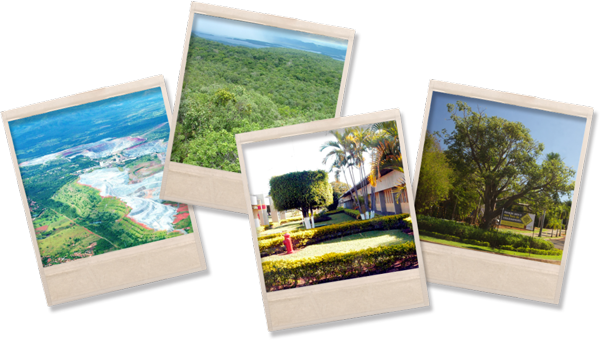 Plan for the revitalization of degraded areas
Plan for the revitalization of degraded areas
EN12EN14EN26GC 8
Areas impacted by mining activity in the Country are guaranteed revitalisation, in accordance with the Brazilian Government’s Plan for the Revitalisation of Degraded Areas. The revitalization of areas adjacent to SAMA are part of the company’s business responsibility. Going well beyond the obligatory requirement of the government, the mining company anticipates revegetation work for degraded areas.
All the sterile tailings that result from mining activity are deposited in tailing piles close to the mine. As the mining activity progresses, revitalisation of areas that are no longer the focus of operational activity begins. In these areas, the sterile tailings are deposited, covered with soil, and treated chemically to guarantee richness in nutrients, which allows vegetation to grow.
The revitalised area also undergoes a process of water drainage to avoid erosion. Only then are planted native and exotic sapling species. Since 1986, areas have been replanted close to the mines, the progress of which is monitored annually. In 2012 the revitalization process was begun on 7.53 hectares for 2013, the plan is to replant 8 to 10 hectares of degraded area. Some of the native species which have adapted well to the revitalised areas, are: Angico, Aroeira, Embaúba, Angico do Cerrado, Ipê and Periquiteira.
Between 1986 and 2012, 103.69 hectares have been re-covered with vegetation. Eternit and Precon Goiás maintain an isolated preservation areas. In addition to this, they also evaluate environmental aspects and impacts using Falure Mode and Effects Analysis - FMEA. While at Tégula, ISO 14001 environmental management system is being implemented.
 |
29km2 THERE IS A SCIENTIFIC FAUNA HUSBANDRY AREA CLOSE TO SAMA’S FORESTRY RESERVE AND RESIDENTIAL HOUSING ESTATE. AMONG OTHER SPECIES, IN THIS AREA ARE, MACAWS, PARROTS, GREATER RHEAS, ROBUST CAPUCHIN MONKEYS, CALLITRICHIDAE (FAMILY OF NEW WORLD MONKEYS INCLUDING MARMOSETS AND TAMARINS), SIDE-NECK TURTLES AND RED-FOOTED TORTOISES. |
Conservation
The Environmental Awareness Project against the waste of water, which has been ongoing at SAMA since 1999, raises the awareness of the local community, schools in the region and employees about the importance of the rational use of water. These initiatives are intensified during periods of drought, contributing to own voyaging wastage and improving the quality of life in the region. The Company also contributes to the prevention of burning in the forestry reserve of the mining company, through its support by its Fire Brigade for the anti-burning program. The initiative includes the construction of clean spaces, either dry or wet, to avoid the spread of fires, making farmers in the vicinity aware of the negative impacts of burning for the use of soil for agriculture.
Eternit’s plants also support local initiatives linked to environmental conservation. In Rio de Janeiro, the Company participates in the project for the adoption of an animal, at Rio Zoo – the zoological garden of Rio de Janeiro, and is involved in the Environmental Monitoring Project, of the Jequiá Environmental Education Centre. In Goiânia, since 2004 it has supported the campaign for the preservation of the Araguaia River, aimed at the environmental education of tourists and the population.
